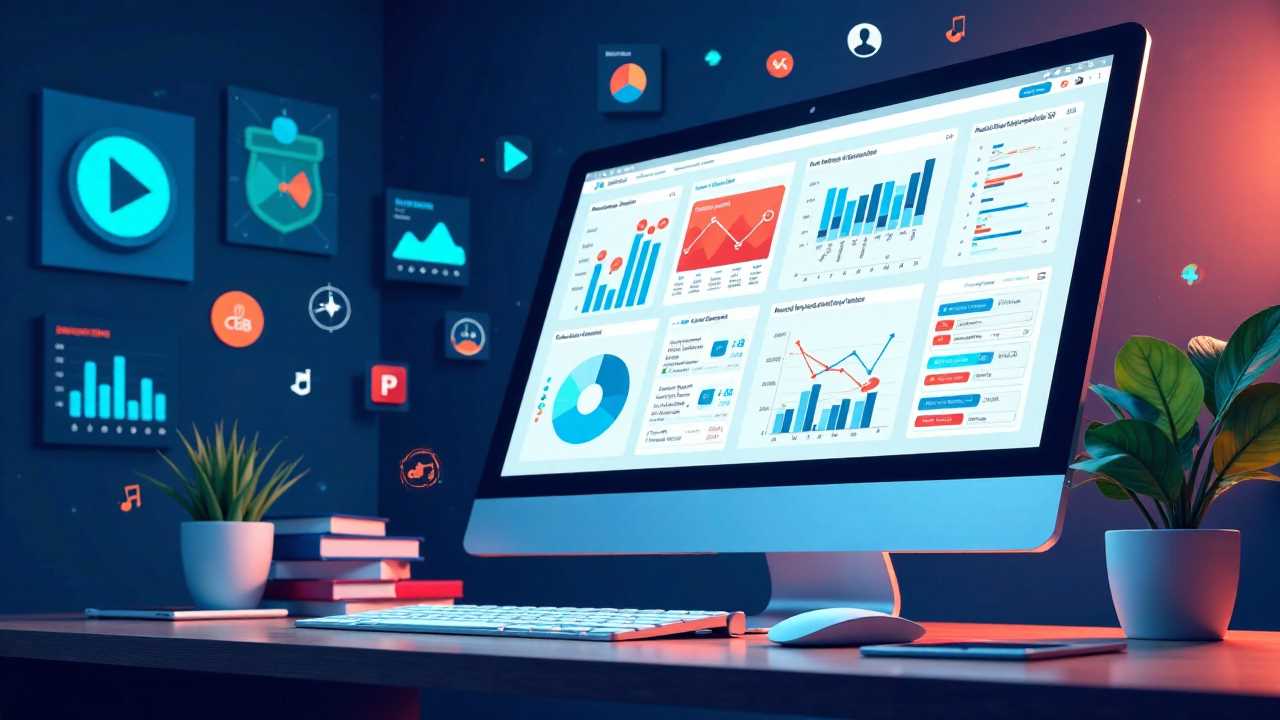
Understanding the Power of Music Industry Infographics
In the dynamic landscape of the music industry, infographics serve as a powerful tool for data visualization. They transform complex information into visually appealing graphics that are easy to understand and share. By harnessing the power of visual storytelling, we can engage audiences more effectively, making our messages resonate. Infographics can illustrate trends, showcase statistics, and highlight key insights, all while maintaining the viewer's interest.
DIY Design: Creating Your Own Infographics
Creating infographics doesn’t require advanced graphic design skills. With the right tools and a clear vision, anyone can craft compelling visuals. Start by selecting a creative layout that aligns with your content. A well-structured layout guides the viewer’s eye and enhances comprehension. Consider using grids to organize information logically, ensuring that each section flows seamlessly into the next.
Choose a color palette that reflects the theme of your infographic. Colors evoke emotions and can significantly impact audience engagement. For instance, vibrant colors can convey excitement, while muted tones may suggest sophistication. Balance is key; too many colors can overwhelm the viewer, while too few can make the design feel flat.
Incorporating Graphic Elements for Maximum Impact
Graphic elements such as icons, charts, and images play a crucial role in enhancing your infographic. Icons can simplify complex ideas, while charts can effectively present data comparisons. When incorporating these elements, ensure they are relevant and support the overall narrative of your infographic.
Use high-quality images that resonate with your audience. Stock photos can be a great resource, but consider creating custom graphics to stand out. Tools like Canva and Adobe Spark offer user-friendly interfaces for designing unique visuals that reflect your brand identity.
Utilizing Data Visualization Techniques
Effective data visualization is at the heart of any successful infographic. Start by gathering accurate and relevant data. Use reputable sources to ensure credibility. Once you have your data, think about the best way to present it. Bar graphs, pie charts, and line graphs are excellent for showcasing numerical data, while timelines can illustrate progress over time.
When displaying data, clarity is paramount. Avoid cluttering your infographic with excessive information. Focus on key statistics that tell a compelling story. Use annotations to highlight significant points, guiding the viewer through the data without overwhelming them.
Engaging Your Audience Through Visual Storytelling
Visual storytelling is about crafting a narrative that resonates with your audience. Start by defining the message you want to convey. What do you want your audience to learn or feel? Once you have a clear message, structure your infographic to guide the viewer through the story.
Incorporate a beginning, middle, and end. Start with an engaging introduction that captures attention. Present the main content in the middle, using visuals to support your narrative. Conclude with a strong call-to-action, encouraging viewers to share the infographic or explore further.
Best Practices for Audience Engagement
To maximize audience engagement, consider the following best practices:
1. Know Your Audience: Tailor your content to the preferences and interests of your target demographic. Understanding what resonates with them will make your infographic more impactful.
2. Keep It Simple: Avoid jargon and overly complex language. The goal is to communicate clearly and effectively.
3. Optimize for Sharing: Design your infographic with sharing in mind. Include social media buttons and ensure it’s easy to download. The more shareable your infographic, the wider your reach.
4. Mobile-Friendly Design: With many users accessing content on mobile devices, ensure your infographic is optimized for smaller screens. A responsive design will enhance user experience and engagement.
Measuring the Success of Your Infographics
After publishing your infographic, it’s essential to measure its success. Use analytics tools to track engagement metrics such as shares, views, and comments. This data will provide insights into what worked well and what can be improved for future designs.
Consider conducting surveys or gathering feedback from your audience. Understanding their perceptions can help refine your approach and enhance the effectiveness of your future infographics.
The Future of Music Industry Infographics
As the music industry continues to evolve, the demand for engaging and informative content will only grow. By mastering the art of DIY design, leveraging visual storytelling, and focusing on data visualization, we can create compelling infographics that not only inform but also inspire. Embrace these techniques to enhance your audience engagement and establish a strong presence in the music industry. The journey of crafting infographics is not just about design; it’s about connecting with your audience in meaningful ways.
 Digital Art InstructionDIY Infographics DesignMobile Game ArtworkPersonalized Logo Design3D AnimationeBook Covers DesignPrivacy PolicyTerms And Conditions
Digital Art InstructionDIY Infographics DesignMobile Game ArtworkPersonalized Logo Design3D AnimationeBook Covers DesignPrivacy PolicyTerms And Conditions
